View her works here
20120422
Pakayla Biehn
Pakayla Biehn, the San Francisco-based artist collaborates with several photographers, to produce a painting series upon the double exposure theme. Pakayla uses oil paint on canvas to present dream-like transfiguration of the natural world. The skill and refined beauty of her paintings enlists a realist style that recalls the delicacy, formality, and craftsmanship of old master techniques. She combines the cultivation of the portrait with a very intimate and vibrant observation of nature.
20120416
Michael Paulus
A character study of 22 present and past cartoon characters
Animation was the format of choice for children's television in the 1960s, a decade in which children's programming became almost entirely animated. Growing up in that period, I tended to take for granted the distortions and strange bodies of these entities.These Icons are usually grotesquely distorted from the human form from which they derive.
I decided to take a select few of these popular characters and render their skeletal systems as I imagine they might resemble if one truly had eye sockets half the size of its head, or fingerless-hands, or feet comprising 60% of its body mass.
These characters have become conventions that are set, defined, and well-known personas in our culture. Being that they are so commonplace and accepted as existing I thought I would dissect them like science does to all living objects - trying to come to an understanding as to their origins and true physiological make up. Possibly to better understand them and see them in a new light for what they are in the most basic of terms.
The photographed pieces are the original, translucent hinged overlay format. the rest are photoshopped facsimiles of the originals.
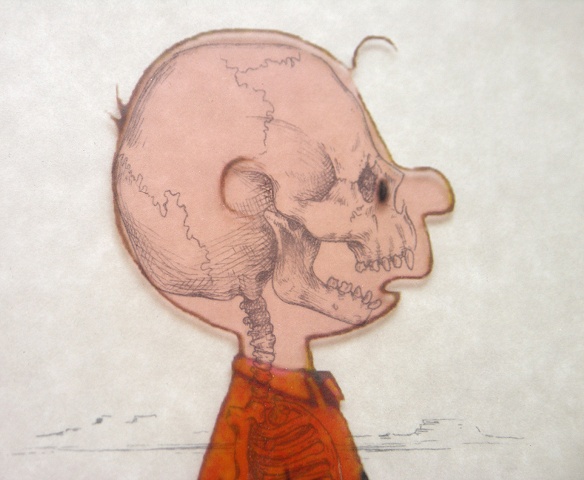
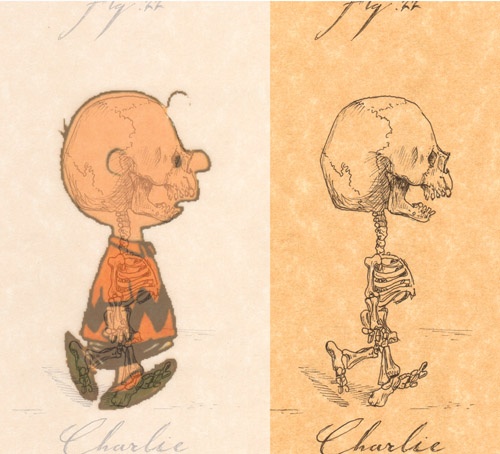

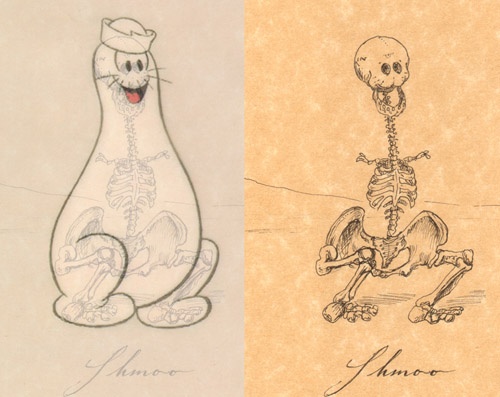



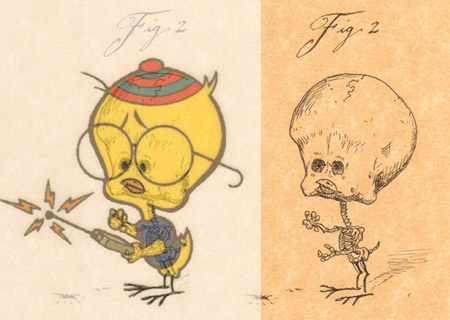





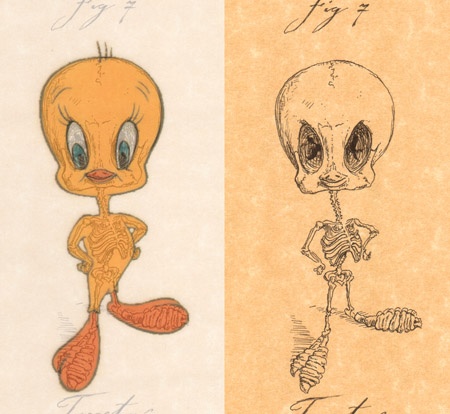
20120413
Petra Collins
Petra Collins, at the age of 19, is making a sensation in the art and fashion scene. Her hazy, provocative shots of teenage girls have been featured in popular magazines such as Vice, Oyster, HUH and Complex. Petra is currently living and working in Toronto, Canada. Her pictures are like screen-caps extracted from a cult movie.
"This is like a time where I'm coming of age and I'm learning everything and it comes through in my photos," Petra said. "It's also something I'm very interested in, femininity and sexuality."
Nadja Sayej, a Canadian art journalist and critic currently based in Berlin, admits she didn't expect the teenager to have much talent after she interviewed her for a story she was doing on Kern. But after seeing her work, Sayej quickly realized Collins was much more than an attractive, popular teenager. She calls Collins a "creative leader" and describes her style as "post-hipster, social media photography, that's not necessarily narcissistic."
"It looks like she's taken her best friends from high school and polished them into super glamorous but not overdone, high quality style magazine fashion stuff," she said. "For that to function in the art world, it takes a really particular balance to pull that off right."
20120412
Antje Blumenstein
(b.1967, Germany) lives and works in Berlin.
Berlin’s Antje Blumenstein focused attention on the increasing public interest in religious themes. In Blumenstein’s view, current political debate about ethics and morals and their decay often refers to Christian values, as if seeking a safeguard. What kind of response does this elicit from our largely secular society? To what extent is religion regaining relevance within society? These were the questions posed to passersby by the piece.
Antje Blumenstein’s sculpture Himmel und Hölle (Heaven and Hell, 2006) ,is based on a popular children’s game, the origami “fortune teller” in whose folds are written contrary terms to be assigned to players by the mini oracle via a process of opening and shutting. Good or evil, heaven or hell are the antagonistic prospects on offer. Children playing the game are not usually aware that these sets of opposites are based on conventional religious notions; but with her almost brutal sculpture made of splintered chipboard, Antje Blumenstein focuses on precisely this dimension of rules that run through all religions — offering the prospect of a fulfilled afterlife or of eternal damnation.
On the wall of the gallery, she installed a further reference to notions of hell and the devil as understood by Islam — a reference that is hard to decipher for those lacking knowledge of the corresponding terminology: the words “er ging weg” (he went away), formed out of a blue light chain, are synonymous with Satan or Sheitan, whose presence is explained by the absence of Allah. Where God is not is automatically the locus of evil.
Antje Blumenstein also worked with the eye-catching and deceptively cheerful aesthetic of light chains in her work entitled Anyone Can Get Into Heaven (2007). The glowing slogan satirizes the promises made by advertising, completing the circle of Antje Blumenstein’s highly reflected works on the tensions between religion and society.
Anne Ten Donkelaar
"Flower constructions"
Collages with cutouts from flowers pictures and pressed flowers.
simply beautiful
This is what we love
welcome back
Subscribe to:
Posts (Atom)












































